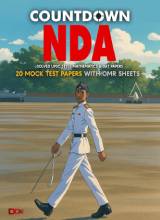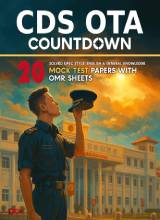Rashtriya Rifles Indian Army – All You Need To Know
The Rashtriya Rifles or RR is a branch of the Indian Army under the authority of the Indian Ministry of Defence. The RR is a counter-insurgency force made up of soldiers deputed from other parts of the Indian Army. The force is currently deployed in the state of Jammu and Kashmir.
The initial RR units performed well despite certain inherent weaknesses in their class and composition. They were raised on all India/all class basis with troops from all over the army, the logic being that since the units were going to fight an insurgency, there should be no scope for vested interests in accusing a battalion of bias based on class or regional attributes.
Keeping this in mind, a decision was taken to alter the basic composition of the RR battalions. Instead of its units being composed of troops from all over the army, at least two RR battalions were made an integral part of each of the infantry regiments and other arms.
The majority of troops in those RR battalions, along with the battalion’s commanding officer, are from the same regiment. This ensures not only functional cohesion but also maintenance of regimental esprit de corps.
Each regimental center was given the task of raising 1–2 battalions in one years’ time. During this period, the units were raised and sent to Northern Command where they got another 4 to 6 weeks to consolidate. All of them went through a structured 8 week course in special CI schools. They were then given another month to stabilise and were then sent to the more dormant sectors of Kashmir and to the Punjab.
All units of the Indian Army have an organisational structure called the War Establishment (WE). The WE is used to lay down the number of men, vehicles, weapons etc. which a unit is authorised to use for carrying out its assigned role.
The infantry battalions in the Indian Army have a standard organisation called the Inf Bn Standard. Till the RR came into the picture, the infantry battalions tasked for CI ops were on the Inf Bn CI.
A battalion on Inf Bn CI had four infantry companies and retained their battalion heavy weapons since they were dual tasked. The RR on the other hand has an organisation structure tailor-made for CI operations. Each RR battalion has six infantry companies and does not have the heavy battalion weapons which the Inf Bn CI carry, although RR troops do train on them.
Also unlike regular army units which were rotated out of the valley regularly, the RR concept was to rotate personnel after fixed periods of deputation. Currently this is 2-3 years. The RR units are permanently located in “sectors”, with each sector being the equivalent of a brigade with three battalions. To create a distinct identity, the RR has its own dress, special insignia and flag logistics.
The RR units come under four “Counter Insurgency Force” (CIF) HQs. Each CIF is responsible for an area of the Kashmir Valley and Jammu Division. There were originally four CIFs, until the RR raised a fifth “Uniform” force in 2003–04.
- Counter Insurgency Force (CIF) R / Romeo Force – Rajouri and Poonch
- Counter Insurgency Force (CIF) D / Delta Force – Doda
- Counter Insurgency Force (CIF) V / Victor Force – Anantnag, Pulwama, Shopian, Kulgam and Budgam
- Counter Insurgency Force (CIF) K / Kilo Force – Kupwara, Baramulla and Srinagar
- Counter Insurgency Force (CIF) U / Uniform Force – Udhampur and Banihal
Victor Force and Kilo Force come under the operational control of 15 Corps. Delta Force and Romeo Force come under the operational control of the 16 Corps. Each force is headed by a general officer commanding (GOC) with the rank of a Major General.
In terms of their location and use, each of the units and sectors was seen as being interchangeable with a regular, equivalent army formation. GOC Victor Force in some instances would have 2 sector HQs and a regular infantry brigade in his charge.
On the other hand, when 8 Mountain Division moved to Kashmir, it came with 2 brigades which were then augmented by adding a sector of the RR apart from a couple of independent mountain brigades to it.
The areas covered by the Counter Insurgency Forces are themselves divided into sectors:
- Sector 1 – Anantnag district
- Sector 2 – Kulgam district
- Sector 3 – Manasbal Lake
- Sector 4 – Doda district
- Sector 5 – Baramulla district
- Sector 6 – Poonch district
- Sector 7 – Kupwara district
- Sector 8 – Kupwara district
- Sector 9 – Kishtwar district
- Sector 10 – Baramulla district
- Sector 11 – Banihal
- Sector 12 – Budgam district
RR comprises 65 battalions. Known RR battalion affiliations include:
- 1 RR – Mahar Regiment
- 2 RR – Sikh Light Infantry
- 3 RR – Jammu & Kashmir Rifles
- 4 RR – Bihar Regiment
- 5 RR – Jat Regiment
- 7 RR – Punjab Regiment
- 9 RR – Rajputana Rifles
- 10 RR – Rajput Regiment
- 11 RR – Dogra Regiment
- 12 RR – The Grenadiers
- 13 RR – Kumaon Regiment
- 14 RR – Garhwal Rifles
- 15 RR – 1 Gorkha Rifles
- 17 RR – Maratha Light Infantry
- 19 RR – Sikh Light Infantry
- 20 RR – Dogra Regiment
- 21 RR – Brigade of the Guards
- 22 RR – Punjab Regiment
- 23 RR – Rajput Regiment
- 24 RR – Bihar Regiment
- 25 RR – Army Air Defence
- 26 RR – Kumaon Regiment
- 27 RR – Maratha Light Infantry
- 28 RR – Jammu & Kashmir Rifles
- 29 RR – The Grenadiers
- 30 RR – Mahar Regiment
- 31 RR – Parachute Regiment
- 32 RR – 3 Gorkha Rifles
- 34 RR – Jat Regiment
- 35 RR – Assam Regiment
- 36 RR – Garhwal Rifles
- 37 RR – Punjab Regiment
- 38 RR – Madras Regiment
- 39 RR – The Grenadiers
- 40 RR- Dogra and Artillery
- 41 RR – Maratha Light Infantry
- 42 RR – Assam Regiment
- 44 RR – Rajput Regiment
- 45 RR – Jat Regiment
- 46 RR – Sikh Regiment
- 47 RR – Bihar Regiment
- 48 RR – Garhwal Rifles
- 50 RR – Kumaon Regiment
- 51 RR – Mahar Regiment
- 52 RR – Jammu & Kashmir Rifles
- 53 RR – Punjab Regiment
- 55 RR – The Grenadiers
- 56 RR – Maratha Light Infantry
- 59 RR – Assam Regiment
- 60 RR – Naga Regiment
- 61 RR – Jat Regiment
- 62 RR – Dogra Regiment
- 63 RR -Bihar Regiment
The RR was raised as a paramilitary force and it was envisaged that its personnel, like the Assam Rifles, would consist of regular army volunteers on deputation, ex-servicemen and lateral inductees from various paramilitary forces and central police organisations. However, this didn’t work out.
Instead, each infantry regiment of the Indian Army has at least two RR battalions, and soldiers and officers from the regiment are deputed to the RR battalions for 2-3 years. Thus it is not possible to join the RR directly, as personnel must first join a regiment before they can serve in the RR. RR personnel receive 25% more salary than regular army personnel and additional benefits, thus often making it a coveted deputation
BOOKS BY DDE FOR DEFENCE ASPIRANTS
HIGH SUCCESS RATE
Start your SSB preparations with these specially curated ebooks.
Stage 1 SSB – SSB Oir ebook
SSB Psychology Test – Click Here
SSB Group Tasks – Click Here
Thematic Apperception Test – Click Here
Situation Reaction Test – Click Here
To Download Free SSB Material – Click Here






 Order Now on Amazon
Order Now on Amazon
